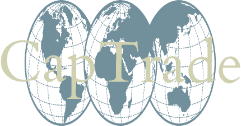Canada Requests Consultations with the U.S. at the WTO
On January 10th Canada circulated to World Trade Organization (WTO) members its Request for Consultations with the United States regarding “Certain Systemic Trade Remedies Measures.”[1] A request for consultations by a member of the WTO formally initiates a dispute.[2]
The WTO dispute system permits consultations for the purpose of finding a solution that is acceptable for the complainant and respondent. During these discussions, the U.S. and Canada may be able to reach a solution without turning to litigation, but if consultations have not resolved the dispute after 60 days, Canada may request adjudication.[3]
In its 33-page Request for Consultations document, Canada alleges that the U.S. is inconsistent with numerous WTO obligations, enumerated in the following[4]:
1. The Liquidation of Final Anti-Dumping and Countervailing Duties in Excess of WTO-Consistent Rates and Failure to Refund Cash Deposits Collected in Excess of WTO-Consistent Rates
2. Retroactive Provisional Anti-Dumping and Countervailing Duties Following Preliminary Affirmative Critical Circumstances Determinations
3. The US Treatment of Export Controls in Countervailing Duty Proceedings
4. The Improper Calculation of Benefit in Countervailing Duty Proceedings Involving the Provision of Goods for Less than Adequate Remuneration
5. The United States’ Effective Closure of the Evidentiary Record before the Preliminary Determination
6. The US International Trade Commission Tie Vote Provision
Within these allegations, Canada claims that the U.S. procedures broke the WTO’s Anti-Dumping Agreement, the Agreement on Subsidies and Countervailing Measures, the General Agreement on Tariffs and Trade, as well as the Understanding on Rules and Procedures Governing the Settlement of Disputes. Canada’s annexes cite several allegedly unfair trade investigations between the U.S. and Canada such as lumber and newsprint; Canada also cited cases between the U.S. and other WTO members.[5]
U.S. Trade Representative Robert Lighthizer responded to Canada’s WTO challenge, calling it an “ill-advised attack on the U.S. trade remedies system” and that if Canada were to succeed “…other countries would primarily benefit, not Canada. For example, if the U.S. removed the orders listed in Canada’s complaint, the flood of imports from China and other countries would negatively impact billions of dollars in Canadian exports to the United States, including nearly $9 billion in exports of steel and aluminum products and more than $2.5 billion in exports of wood and paper products.”[6] Indeed, Canada exports billions of dollars in goods and services to the United States each month. The United States typically runs a goods trade deficit with Canada, but that imbalance has declined in recent years, as shown in the figure below.
Data Source: U.S. Census Bureau, Trade in Goods with Canada (2016, monthly).
The Canadian and U.S. economies are closely intertwined. Canada was the United States’ 3rd largest supplier of goods in 2016, and the U.S. imported Canadian services worth nearly $30 billion in 2016.[7] Of course, the trade relationship runs both ways—Canada was the United States’ largest export market for goods in 2016.[8] The U.S. exported almost $54 billion in services to Canada, as shown in the table below.[9] In 2016 the U.S. had a trade surplus with Canada for goods and services combined of about $7.7 billion.[10] Including income receipts and payments, the U.S. trade surplus with Canada was about $12.7 billion.[11] Bilateral investment flows and stocks are also high. Canada’s direct investments in the United States totaled $51.9 billion in 2016, whereas the U.S. direct investment in Canada were $18.1 billion.[12]
[table id=50 /]
Data Source: Bureau of Economic Analysis, Table 1.3 U.S. International Transactions, Expanded Detail by Area and Country (Canada).
Trade discussions between the U.S. and Canada revved up quickly this year, and the trade relationship between the two countries may be changing. U.S. and Canadian officials met in multiple arenas in January 2018—the World Economic Forum (WEF), the NAFTA renegotiations, and at the WTO. Last week, President Donald Trump and his international economic team traveled to Davos, Switzerland to attend the annual WEF meeting.[13] U.S. Trade Representative Lighthizer[14] and economic officials from Canada and Mexico were also present.[15] On January 23rd, the sixth round of NAFTA talks began in Montreal. [16] Potential revisions to the agreement, precipitated by the U.S., have not been received well by the Canadian and Mexican governments. [17] Meanwhile, Canada’s dispute with the U.S. at the WTO is ongoing, and awaiting a formal response from the U.S. These parties certainly have a lot to talk about.
[1] “Canada files WTO complaint over US trade remedy measures.” World Trade Organization. January 20, 2018. https://www.wto.org/english/news_e/news18_e/ds535rfc_10jan18_e.htm
[2] Id.
[3] Id.
[4] United States – Certain Systemic Trade Remedies Measures – Request for consultations by Canada. Doc 18-0253. January 20, 2018. https://docs.wto.org/dol2fe/Pages/FE_Search/FE_S_S006.aspx?Query=(@Symbol=%20wt/ds535/*)&Language=ENGLISH&Context=FomerScriptedSearch&languageUIChanged=true#
[5] Id.
[6] “USTR Robert Lighthizer Statement on the Canadian WTO Challenge to Trade Remedies.” Office of the United States Trade Representative. January, 2018. https://ustr.gov/about-us/policy-offices/press-office/press-releases/2018/january/ustr-robert-lighthizer-statement-0
[7] Bureau of Economic Analysis, U.S. International Transactions, Expanded Detail by Area and Country (Table 1.3, Canada), data released December 19, 2017. Accessed January 26, 2018. https://www.bea.gov/iTable/iTable.cfm?reqid=62&step=1#reqid=62&step=7&isuri=1&6221=0&6220=2&6210=1&6200=3&6224=&6211=17&6223=0&6222=13&6231=1
[8] U.S.-Canada Trade Facts. Office of the United States Trade Representative. https://ustr.gov/countries-regions/americas/canada
[9] Bureau of Economic Analysis, U.S. International Transactions, Expanded Detail by Area and Country (Table 1.3, Canada), data released December 19, 2017. https://www.bea.gov/iTable/iTable.cfm?reqid=62&step=1#reqid=62&step=7&isuri=1&6221=0&6220=2&6210=1&6200=3&6224=&6211=17&6223=0&6222=13&6231=1
[10] Id.
[11] Id.
[12] Id.
[13] “Trump arrives in Davos ‘to tell world how great America is’.” Deutsche Welle. January 25, 2018.
http://www.dw.com/en/trump-arrives-in-davos-to-tell-world-how-great-america-is/a-42298606
[14] Josh Wingrove. “NAFTA Trio to Gather in Davos as Negotiations Resume in Canada.” Bloomberg. January 15, 2018. https://www.bloomberg.com/news/articles/2018-01-15/nafta-trio-to-gather-in-davos-as-negotiations-resume-in-canada
[15] Kelsey Johnson. “Freeland, Lighthizer to meet in Davos Friday.” iPolitics Canada. January23, 2018. https://ipolitics.ca/2018/01/23/freeland-lighthizer-meet-davos-friday/
[16] Josh Wingrove. “NAFTA Trio to Gather in Davos as Negotiations Resume in Canada.” Bloomberg. January 15, 2018. https://www.bloomberg.com/news/articles/2018-01-15/nafta-trio-to-gather-in-davos-as-negotiations-resume-in-canada
[17] Patrick Gillespie. “Mexico and Canada slam U.S. as NAFTA talks are pushed into 2018.” CNN Money. October 17, 2017. http://money.cnn.com/2017/10/17/news/economy/nafta-talks-round-4-end/index.html

